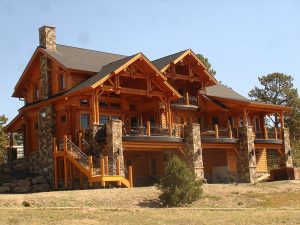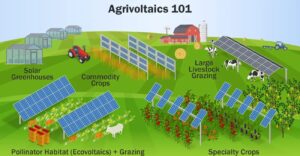The Council of New York Cooperatives and Condominiums (www.cnyc.coop) held their 29th Annual Housing Conference on Sunday, November 15th in New York City. The yearly conference offers a full day of workshops as well as exhibitors that offer various services and products housing cooperatives or condos benefit from.
Two workshops I attended focused on energy awareness. Though the workshops did not really introduce new technologies it did introduce a process for implementation of energy saving devices for existing multifamily building.
Tom Sahagian, of Power Concepts, LLC, administered the workshop on organizing a “Green Committee” within your co-op or condo development. He highlighted that first and foremost you and your fellow building owners must want to make the energy awareness changes and follow through on the plans. Mr. Sahagian outlined a 5 step process for successful transition into cost effective energy efficiency and water conservation.
The five steps include;
1.) Identifying a political will that exist among the residents is essential; the residents have to be committed to the process of transitioning to energy saving devices. One way to ensure the commitment is to set tangible goals and deadlines.
2.) Set up a framework, or the committee. Assign people who are excited and energized to see this process through to a unified committee. This committee can begin with outlining what changes are realistic for the buildings. Are the changes you want to make to your building technically feasible and cost effective?
3.) The Committee can then start gathering energy consumption and cost data as well as maintenance and repair costs. This data can cover 1 or 2 years and should include; electric, oil, gas, and water. Having repair and maintenance costs will help the committee understand if the building is allocating a lot of money to a particular system like the boiler or burner, for example.
4.) The group will next assess the assets of the building. The committee should identify both internal and external assets. Does the building have a reserve fund it can use? Does the building have the ability to apply for a loan? Or does the building have enough people willing and able to do some light renovation work themselves?
5.) Finally, with all the above information the committee should seek a technical adviser. This could be an engineer or architect. Some qualities your technical advisory should have are a custom approach, flexibility, and a true commitment to the planet. Through face to face conversation and collaboration you will get a better sense of the qualities your adviser has.
The committee should first identify and implement devices and fixtures that do not cost much and they can install themselves. Examples of simple cost effective energy saving devices include;
- Water: Any number of low flow fixtures that can be attached to sinks, toilets and showers.
- Electrical: Energy Star appliances (particularly refrigerators), power strips for all electronics so they can all be easily powered off, compact florescent light bulbs.
- Heat: Programmable thermostats, or individual thermostats on shared steam heat systems.
This is a website that lists the many ways you can easily increase energy efficiency and water conservation: http://globalwarming-facts.info/50-tips.html
The next level of energy efficiency comes with the help of your technical adviser. Have them review the different systems of your building that you may not be able to asses on your own. Example of items the adviser may identify include;
- Insulation on the hot and cold water supply pipes
- Windows and doors for wear and tear on the weather stripping
- Roof penetrations for insulation
- Properly working kitchen and bathroom exhaust fans
Overall systems can be review for efficiency and necessary upgrades as well. This may include energy modeling which can play out different scenarios for your buildings systems.
Finally, the main take-a-way from this seminar was it is most important to first identify the financially feasibility of energy retrofits and then with the money you save from these simple upgrades, install innovations like solar panels or gray water reuse systems that can lead to greater energy efficiency and water conservation.
Mr. Sahagian advice was very realistic and a great outline for how to activate people to organize themselves within their community.
The workshop that followed; “Harnessing the Sun and the Wind” was co-taught by representatives from Solar One (www.solar1.org), Chris Neidl, and The Community Environmental Center (www.cecenter.org), Larson Plano, echoed energy saving ideas that were also cost effective, meaning the savings are greater than the upfront cost.
Though wind and solar energy are not as cost effective today as other types of energy the workshop suggested purchasing renewable energy credits (REC’s) as a way to “utilize” wind energy. You can insure that you are buying “local” REC’s to help your regional environment, meaning you are purchasing wind energy from a local wind farm.
The idea of buying REC’s is that you are offsetting the cost of the infrastructure wind energy requires because it is not as established as traditional methods of energy production. The goal is to make wind energy more mainstream so that the cost of producing this renewable energy is more competitive with oil or coal for example.
Chris Neidlthen stated the case for solar panels. Granted when you think of NYC you do not really think about solar energy. Despite this fact, there are actually quite a few incentives that make PV an appealing idea for New Yorkers. With the various federal, state and city incentives the cost of installing PV panels is reduced almost 93%!
Here is the breakdown Solar One gave for a 250 Unit Co-op:
| System Size: | 57 kW | |
| System Cost per Watt: | $7.50 | |
| Total cost before Incentives: | 100% | $425,762.00 |
| REBATES | ||
| NYSERDA | 29% | $125,266.00 |
| NYC Property Tax Abatement | 25% | $105,173.00 |
| Federal Tax Credit | 21% | $90,149.00 |
| NY State Tax Credit | 18% | $75,124.00 |
| Net cost after incentives | 7% | $30,050.00 |
Though this cost analysis makes for a solid financial argument the physical conditions of the city, with it many towering high-rises, present another case. The shadows that are cast present little to no opportunity for many buildings in the city. There are some neighborhoods, Long Island City in Queens, with buildings of a similar height and plenty of roof real estate that could have potential, given that the zoning requirements can continue to restrict the heights.
Obviously Colorado has more opportunities for PV, it has more days of sun and has plenty of real estate that is not yet blocked by towering buildings.
Solar thermal presents an interesting case for pre-heating domestic hot water. It is not recommended to use solar thermal to heat a building because of the time of use factors (when you need heat in the winter, there is not much sun in NYC, and water will not get up to the 200+ degrees required to heat a space.) In addition, solar thermal does not have nearly the same financial insensitive PV has.
Finally, Larson Plano discussed wind power and its possibilities in the urban environment. Wind power is not ideal for the city. In order for wind turbines to work efficiently the wind must be smooth(laminar flow). In an urban environment the wind is very choppy because it is bouncing off of all kinds of surfaces; buildings, trees, bridges, etc. So the wind is never smooth enough to create the lift that circulates the turbine (like airplane lift). Larson did mention a particular type of turbine that was used on Melrose Commons, an affordable housing development in the Bronx. These are 1 kW parapet mounted wind turbines. Though they have not been tested as part of a building system so it will be interesting to see how well they generate energy for the building.


These recommendations I took away from the workshops for existing multifamily buildings turned me on to the realistic side of implementing cost effective efficient technology. Though the workshops were specific to New Yorkers I think Denver, in its rapid transition to urbanity, can learn from what New York has face in attempting to sustainably house millions.









